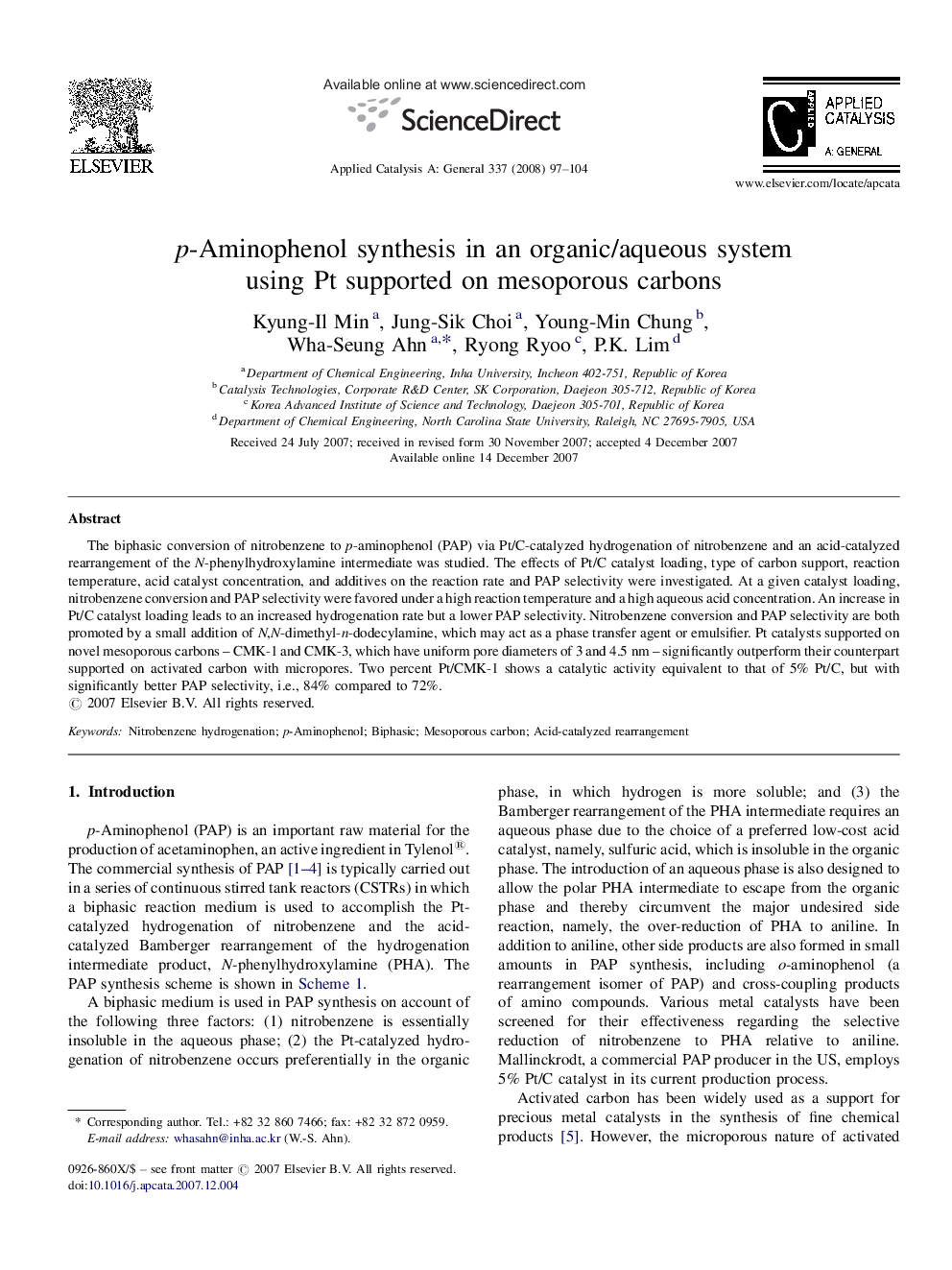| کد مقاله | کد نشریه | سال انتشار | مقاله انگلیسی | نسخه تمام متن |
|---|---|---|---|---|
| 43642 | 45980 | 2008 | 8 صفحه PDF | دانلود رایگان |

The biphasic conversion of nitrobenzene to p-aminophenol (PAP) via Pt/C-catalyzed hydrogenation of nitrobenzene and an acid-catalyzed rearrangement of the N-phenylhydroxylamine intermediate was studied. The effects of Pt/C catalyst loading, type of carbon support, reaction temperature, acid catalyst concentration, and additives on the reaction rate and PAP selectivity were investigated. At a given catalyst loading, nitrobenzene conversion and PAP selectivity were favored under a high reaction temperature and a high aqueous acid concentration. An increase in Pt/C catalyst loading leads to an increased hydrogenation rate but a lower PAP selectivity. Nitrobenzene conversion and PAP selectivity are both promoted by a small addition of N,N-dimethyl-n-dodecylamine, which may act as a phase transfer agent or emulsifier. Pt catalysts supported on novel mesoporous carbons – CMK-1 and CMK-3, which have uniform pore diameters of 3 and 4.5 nm – significantly outperform their counterpart supported on activated carbon with micropores. Two percent Pt/CMK-1 shows a catalytic activity equivalent to that of 5% Pt/C, but with significantly better PAP selectivity, i.e., 84% compared to 72%.
The biphasic conversion of nitrobenzene to p-aminophenol (PAP) via Pt/C-catalyzed hydrogenation of nitrobenzene and an acid-catalyzed rearrangement of the N-phenylhydroxylamine intermediate was studied. The effects of Pt/C catalyst loading, type of carbon support, reaction temperature, acid catalyst concentration, and additives were investigated. Pt catalysts supported on novel mesoporous carbons which have uniform pore diameters of 3 and 4.5 nm significantly outperform their counterpart supported on activated carbon.Figure optionsDownload as PowerPoint slide
Journal: Applied Catalysis A: General - Volume 337, Issue 1, 15 March 2008, Pages 97–104